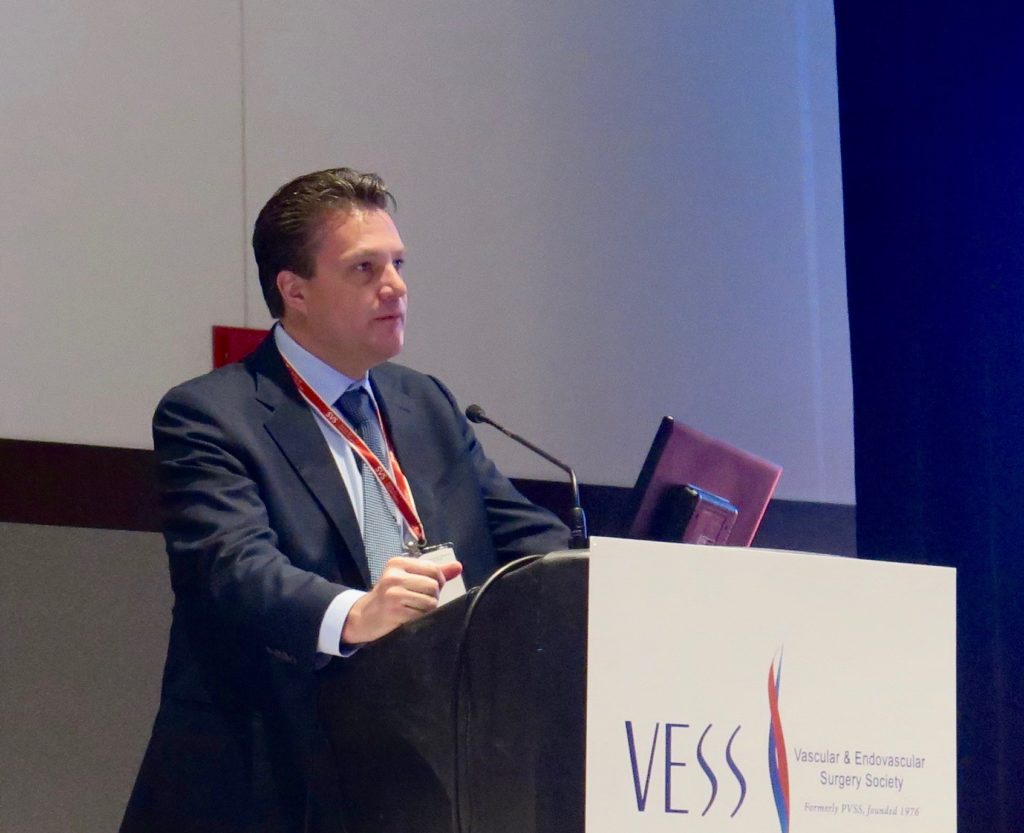
Major adverse events in patients undergoing transcarotid artery revascularisation (TCAR) were similar to those receiving a carotid endarterectomy, a study has found, despite the higher medical risk in the former group. Marc Schermerhorn (Beth Israel Deaconess Medical Center, Boston, USA) et al conducted a study to compare in-hospital outcomes of the two procedures.
The data were presented by Schermerhorn at the Society for Vascular Surgery’s (SVS) Vascular Annual Meeting (VAM; 20–23 June, Boston, USA) during a Vascular & Endovascular Surgery Society paper session, and the abstract was recently published in the Journal of Vascular Surgery.
“TCAR is a promising alternative to transfemoral carotid artery stenting, with initial trials like ROADSTER reporting very low 30-day stroke rates,” Schermerhorn said at VAM. “It gives you the benefit of cerebral protection with flow reversal, and avoids aortic arch manipulation.” However, studies confirming the safety and efficacy of TCAR are limited to “highly selected patients and providers”, thus prompting this in-hospital outcomes study.
Schermerhorn and colleagues used the SVS Vascular Quality Initiative TCAR Surveillance Project and carotid endarterectomy databases “to evaluate the safety and efficacy of TCAR in real-world practice, using a contemporary comparison to CEA.” The study included patients undergoing either procedure during the time period 2016–2017, enrolling 1,182 TCAR patients and 10,797 endarterectomy patients.
“TCAR patients were older, and they were also sicker,” Schermerhorn stated, pointing to the baseline characteristics of each group which showed higher co-morbidity rates in this group, including coronary artery disease (55% vs. 28% in the endarterectomy group, p<0.001) and chronic heart failure (20% vs. 11%, p<0.001). He added that “TCAR patients were also more symptomatic, and had a higher degree of stenosis, and were also more likely to have had prior carotid intervention.”
Unadjusted primary outcomes of stroke, death, and other major adverse events showed no statistical difference. The composite stroke/death rate was 1.6% in TCAR vs. 1.4% in carotid endarterectomy patients (p=0.33) and the stroke/death/myocardial infarction rate was 2.5% and 1.9%, respectively (p=0.16). In fact, looking at other outcomes such as haemodynamic instability, cranial nerve injury and operative time, the TCAR patients were half as likely to be treated for hypertension (10% vs 21%, respectively; p<0.001), although “they were slightly more likely to be treated for hypotension,” Schermerhorn noted. Cranial nerve injury was reported in 0.6% of TCAR patients vs. 1.8% of endarterectomy patients (p<0.001), a three times higher rate which Schermerhorn added was “as expected.” Time in the operating room was around 30 minutes shorter for TCAR (78±33 vs. 111±43, respectively; p<0.001).
“Looking at multivariable regression, again there was no difference in stroke/death or the other major outcomes,” Schermerhorn said. When breaking out patient groups into subgroups of symptomatic and asymptomatic, the “one thing that was close” to statistically significant difference was the stroke rate in symptomatic patients.
“Despite the fact that the medical risk was substantially higher in TCAR patients, the major adverse events were similar in TCAR and endarterectomy. However, TCAR had shorter operating room time by more than 30 minutes, one third the rate of cranial nerve injury and lower postoperative hypertension requiring any medications,” Schermerhorn concluded, adding that long-term follow up will be “presented in the near future.”












